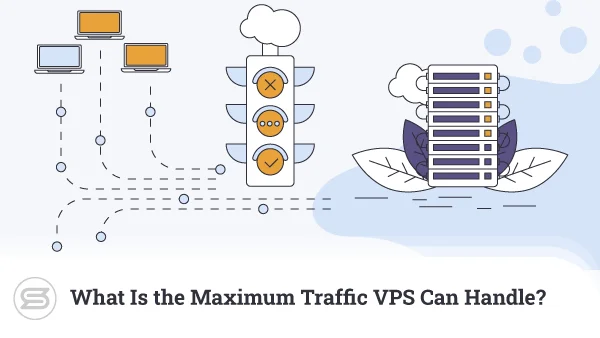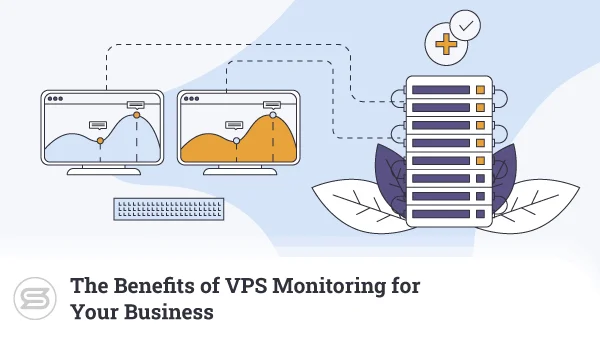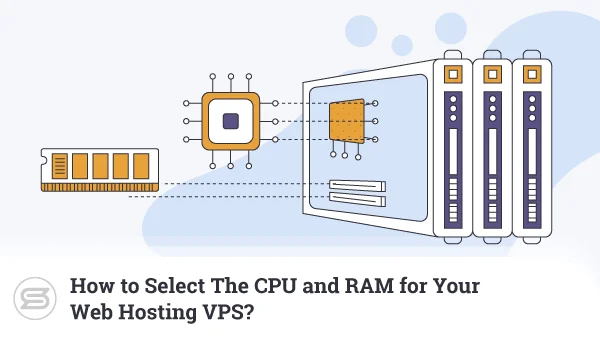Virtual Reality (VR) offers immersive experiences in various fields, including gaming, education, healthcare, and entertainment. To host one, you need a robust solution. Managed Virtual Private Server (VPS) hosting has emerged as a popular choice, providing numerous advantages over other options.
In this article, we will explore the role of managed VPS hosting for virtual reality experiences, how it can aid in delivering high-performance VR content, and how to select the right configuration.
Introduction to Managed VPS Hosting for Virtual Reality (VR) Experiences
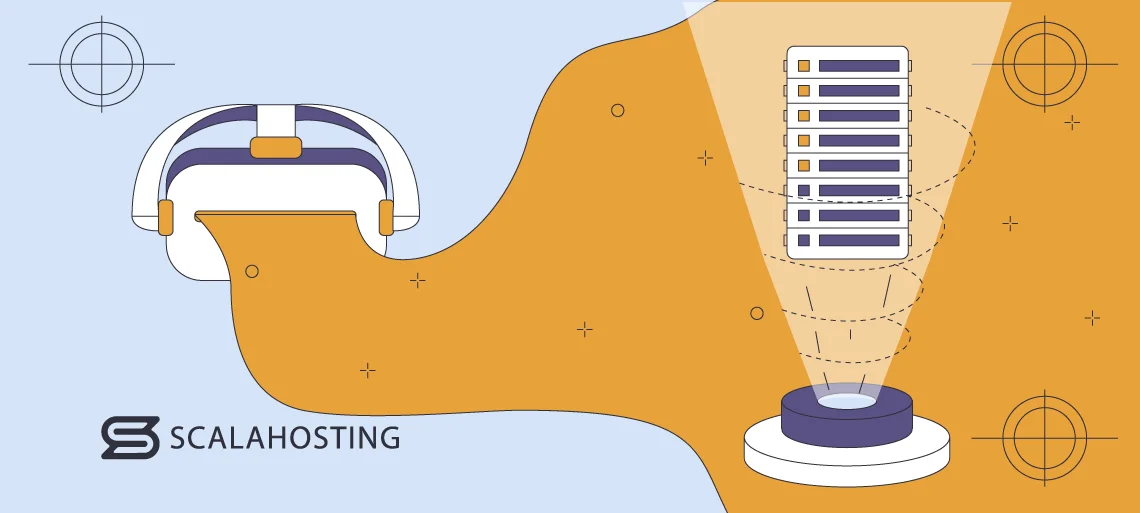
Managed VPS hosting can help you deliver high-quality VR experiences by providing an isolated, virtualized environment that ensures consistent performance. A VPS is a virtualized server within a physical server, offering dedicated resources such as CPU, RAM, storage, and network bandwidth.
Although you’ll share the server with other users, your account will be completely isolated. This means that their actions won’t impact your platform’s performance, nor will attacks on their website threaten yours.
Managed VPS hosting for VR offers several advantages:
- Dedicated resources – ensuring consistent, high-performance VR experiences
- Customization freedom – allowing you to tailor your environment;
- Scalability – managed VPS packages allow you to add or remove resources as per your traffic consumption;
- Security – enhanced security measures and isolated accounts guarantee your platform’s safety;
- Expert support – a dedicated team to take care of your server;
Whether you’re just starting out or your platform already has a growing audience, managed VPS plans will save you time and money and allow you to focus on developing your project.
Selecting the Right VPS Configuration for VR
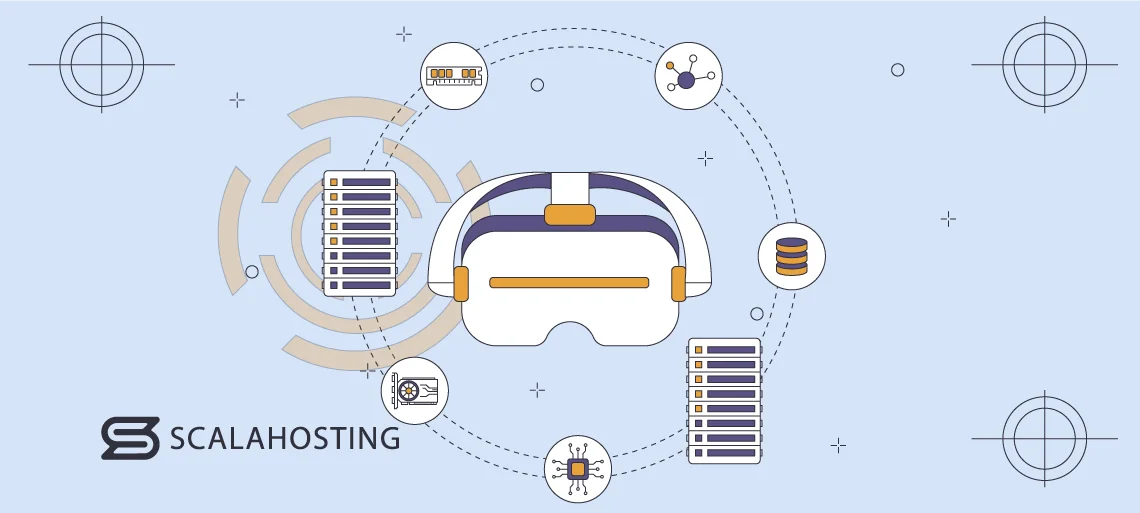
Choosing the right VPS configuration is quite simple as long as you have a realistic idea of the resources you need.
Let’s break those down:
- CPU – VR applications often require significant processing power. Multi-core processors with high clock speeds are ideal;
- RAM – VR content can be memory-intensive. More operating memory equals better performance;
- GPU – powerful GPU is vital for rendering 3D graphics and maintaining smooth frame rates in VR;
- Storage – SSDs (Solid State Drives) provide faster data access, reducing the load times of your VR content;
- Network – high bandwidth and low latency are crucial for real-time VR interactions, so choose a vendor with a reliable network;
Of course, as traffic grows – so will your resource needs. That’s exactly why VPS hosting is perfect – you can add or remove resources whenever you need. You will also pay only for what you’re using.
Managed VPS Hosting vs. Other Hosting Options for VR
When doing research, you’ll encounter several types of hosting:
- Shared Hosting – the cheapest option, but you’ll need to share all your resources and IP with other users, which is very limiting.
- VPS Hosting is a bit more expensive than shared hosting, but you get dedicated resources, your own IP, and a team to take care of your server if you choose a managed service. The most cost-effective option for businesses.
- Cloud Hosting – pricing varies depending on consumption, еnables you to host your website on the cloud instead of a physical server
- Dedicated Server – the most expensive option, you get a predetermined set of resources and are in charge of the server, which is solely at your disposal.
VR applications and platforms are quite resource-intensive. This means that shared hosting is not an option at all. Managed VPS, however, gives you dedicated resources and a team of experts to take care of the technical side of the hosting.
Unlike dedicated servers, VPS plans enable you to add and remove resources according to your needs. Only if your VR platform is too content-heavy – a dedicated server might be a viable option.
VR Development Platforms and Tools
To create immersive VR experiences, developers use various platforms and tools to help them design and render realistic characters, objects, and scenes. Popular choices include Unity and Unreal Engine. There are also widely used tools for 3D modeling, simulations, and content creation, like 3ds Max and Blender.
Such apps will help you with the entire design process, be it sculpting, texturing, animating, etc. Of course, all your creations need to be exported in VR-friendly formats – FBX, OBJ, GLTF, and USDZ. Consider size compression to ensure they’re not causing your website to lag. Don’t go overboard, though – it will negatively affect the quality.
Rendering and 3D Graphics for VR
Let’s start by defining the terms.
The first step to creating a 3D graphic is designing the model. It comes to life thanks to the process of rendering, which involves adding specific textures and lighting to the model to make it more realistic. This helps with the immersion of your users in the VR experience you’re offering.
There are several popular techniques that you can use:
- Implementing high-quality texture mapping for a realistic experience.
- Enhancing lighting and shadow effects for a more immersive VR world.
- Optimizing VR content to achieve consistent frame rates, reducing motion sickness.
- Utilizing the GPU to offload rendering tasks enhances the performance.
Data Streaming and Latency Reduction
If you want to offer a seamless and responsive user experience, you need to reduce latency when streaming real-time data.
To achieve this, you can use Content Distribution Networks (CDNs). They cache and distribute your VR content across several global servers and send the data to the users from the one closest to them. That way, your website can enjoy better speeds, enhanced security, and reduced server load.
Compressing data is another way to minimize transmission times and decrease latency. There are quite a few tools on the market that can help with that, including Zstandard, MPEG Point Cloud Compression, and HandBreak.
Last but not least, you can implement real-time data transmission protocols such as RTP to synchronize VR experiences across users.
VR Content Storage and Delivery
Caching and indexing are key strategies when it comes to efficient content storage and delivery.
Caching is the process of saving data in temporary storage. This ensures faster access to it. It’s an excellent strategy for VR platforms, as users won’t have to rely on the content’s primary storage location. CDN solutions are also of help here – they will load the data from the nearest server, ensuring optimal speeds.
A search index will help your users find the content they need. Think of it as a map that leads to URLs or files. It improves the user experience tremendously.
Security Measures for VR Content and User Data
When launching a VR platform or app, security is one of the most important things to take care of. You’ll be operating with tons of data, which will only grow as your user base expands.
There are several strategies you can employ to keep it safe:
- Update frequently – when you sign up for managed VPS, you’ll have a team updating your server OS. The apps you install, however, are your responsibility. Always keep everything up to date to avoid giving hackers easy access.
- Monitor traffic spikes – if there’s an unexpected influx, that could be a sign of a Distributed Denial of Service (DDoS) attack. Early detection is the key to stopping it.
- Back up your data – most reputable hosting providers will offer remote offsite backups. But you have a role to play, too. Scheduling and automating backups is crucial as it eliminates the risk of human errors. Remember to also test and verify your backups.
- Choose a hosting vendor that offers malware protection and firewalls – those will block hackers from infiltrating your platform and keep an eye on the traffic.
- Limit the usage of unnecessary apps – chaotically downloading apps and then not using them, but leaving them active, is the easiest way to let hackers into your platform. Keep only apps and plugins you actually need.
Scalability for Growing VR Audiences
As your VR platform audience grows, managing scalability becomes essential to ensure availability and responsiveness. That’s why managed VPS hosting is perfect for virtual reality experiences and delivering high-performance VR platforms.
Such packages provide individual hardware resources to all users on a physical server. So, you get enough memory for caching, the necessary CPU to handle VR apps, and the storage required to keep their data intact.
But you will need more during traffic spikes and as your platform grows. VPS hosting enables you to add and remove resources when necessary. You’ll only be paying for what you’re actually using. This scalability makes you more flexible when facing user influxes and growth.
VR User Engagement and Immersion
The key metric to measuring the success of your VR project is user interaction. In order to come up with a suitable strategy to improve engagement, you’ll need to first set measurement metrics. If you’re offering a VR game, you can choose to track how long users play or how often.
Once you get the necessary data, you’ll need to analyze it. Tools such as VadR, LookVR, and Cognitive3D come in handy. Once you get the reports, you’ll know what to focus your efforts on.
It could be design – to boost the immersion, you could add improved graphics, new features, different levels, etc. The more interactive your VR project is – the more time people will spend on it.
To engage new users, you should also work on your marketing strategy. Getting insights about your audience will help you target campaigns better and build stronger communities.
Managed VPS Hosting with ScalaHosting
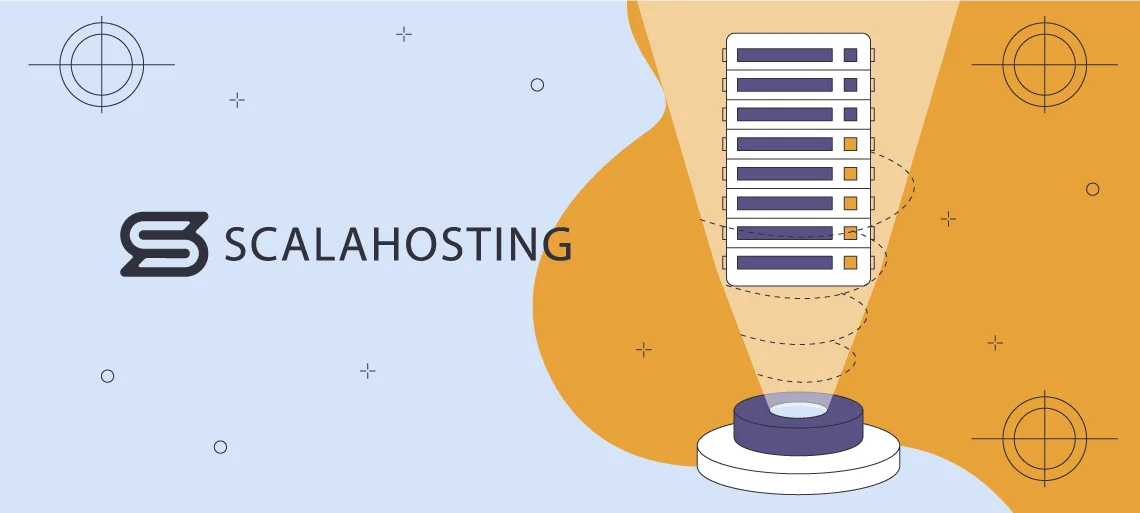
Thanks to 15+ years of experience in the hosting world, ScalaHosting has managed to create Managed VPS plans that are perfectly capable of handling VR platforms and apps. Our packages are scalable and customizable, and our team can ensure they fit your needs like a glove.
We know that monitoring your traffic is crucial for the smooth sailing of your project. That’s why our very own web hosting control panel, SPanel, will help you with web statistics that can easily be filtered by period. Those will show you unique visitors per day, visitor hostnames and IPs, geo-locations, etc. This will also help you to predict user behavior and stay ahead of DDoS attacks.
To ensure all your data and projects are safe, we developed an AI-powered security tool – SShield. It will block 99.998% of attacks even before they reach your server. You and your VR users have nothing to worry about.
We also know that speed is vital. So, we integrated OpenLiteSpeed as an option to give your VR platform the optimal load times it deserves. And, of course, you can freely use CDN platforms. SPanel easily integrates with all of them, including Cloudflare, StackPath, Akamai, etc.
When you choose one of ScalaHosting’s Managed VPS plans, you get a stellar team to take care of your server. Our experts are available 24/7 via chat and email to help with all your hosting inquiries.
Contact us today to find out more!
Wrap Up
With dedicated resources, scalability options, customization, and robust security measures, VPS hosting offers a reliable foundation for VR applications and content. It enables you to optimize your platform and successfully handle the traffic from your growing audience. A managed service will ensure that your projects are supported by a team of experts who have tailored their solutions to fit your exact needs.
When choosing a managed VPS hosting provider, consider factors such as pricing, features, and customer support. Remember – always choose the vendor with the most flexible options.
FAQ
Q: What is the difference between shared hosting and managed VPS?
A: In both cases, you have several users using one physical server. Those on shared hosting share everything, and if one user hogs more resources or gets blacklisted, the rest suffer, too.
On the other hand, VPS offers isolated accounts and provides them with a dedicated IP address and tons of system resources. That way, your website is isolated and safe from the wrongdoings of others.
Q: Does VPS have SSL?
A: All reputable web hosting vendors have SSL certificates in their offers. So, yes, if you go for a trusted host, your VPS package will have an SSL certificate included in the deal. In addition, you can get one yourself by choosing a trusted Certificate Authority and filing a request. Once you get validated, you’ll be able to install your SSL on your server.
Q: Does a VPS cost money?
A: If you want a reliable hosting package with guaranteed resources and security, then yes, a virtual private server does not come for free. Still, this is by far the best service when it comes to value for money, customization freedom, and scalability.

